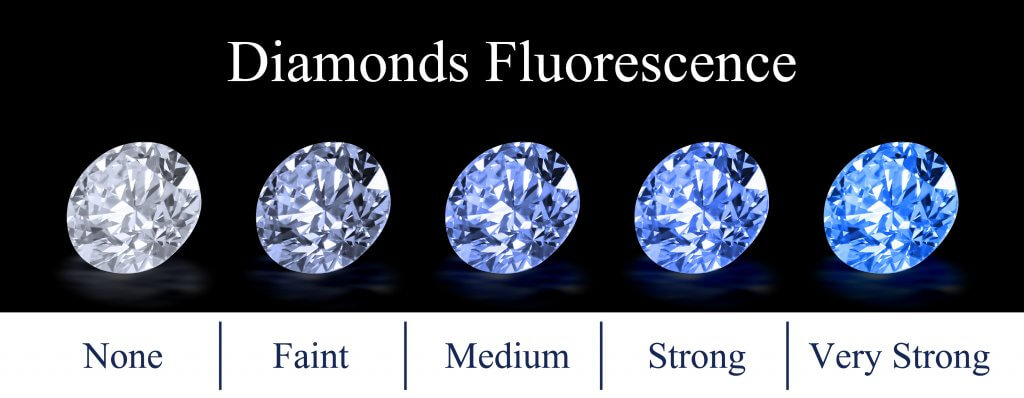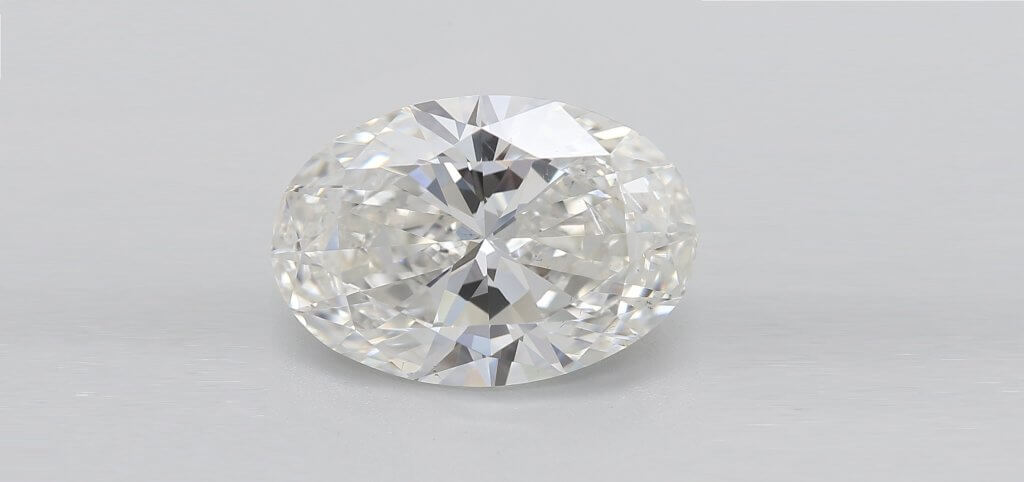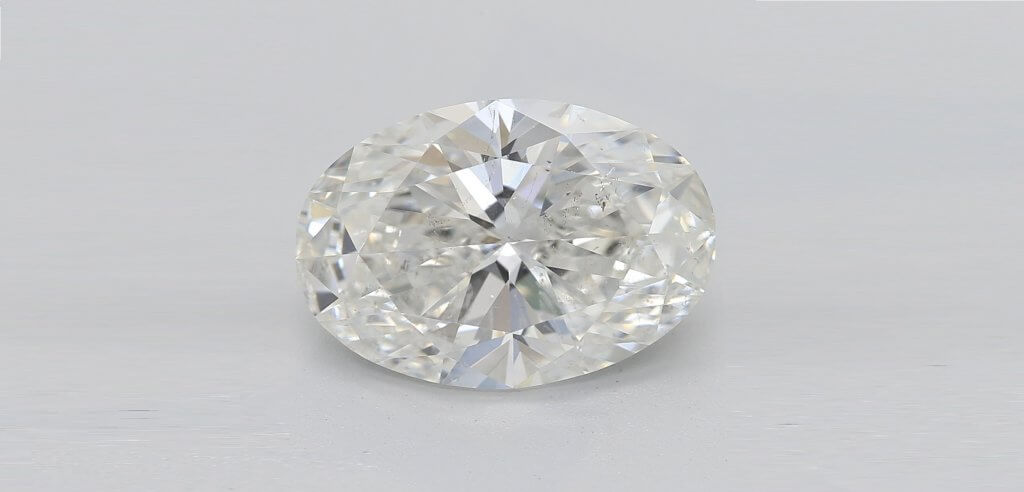What You Don’T Know About K Color Diamonds
Key Takeaways
- K color diamonds sit at the very top of the Faint range of color grades.
- While we would never recommend that shoppers waste their money on a Colorless diamond from the top of the scale, we also wouldn’t advise shoppers to waste money on a diamond that could very well feature visible color.
- This is the risk shoppers take when they go below a J color diamond, which is the final grade in the Near Colorless range.
- While the K grade is cheaper, it’s too big a risk.
- Focus on I and J color diamonds, if your budget is tight, but be sure to see them in person with your jeweler before you commit.
If you’ve already started looking into the Four Cs of diamonds in more detail, and feel as though you’re finally finding your feet in the complicated world of diamond shopping, you’re probably aware of the fact that there is no ‘perfect’ grade capable of catering to every shopper out there.
Your budget and vision for your engagement ring means that the GIA scales are open to interpretation, to a certain extent, provided you consider a very high quality cut and eye cleanliness to be non-negotiables.
This is best illustrated by clarity, and the fact that shoppers can enjoy a long spectrum of grades from FL to SI, with, in many cases, equally beautiful results.
So, when it comes to color, the same rules apply, right? Yes – but, as always, there comes a point at which you don’t want to dip any lower, no matter what budget you’re working with.
What is a K Diamond?
A diamond that has been color graded at K according to the GIA color scale.
This scale runs from D to Z, and is divided into the following categories by the GIA:
| Colorless | Near Colorless | Faint | Very Light | Light |
| D, E, F | G, H, I, J | K, L, M | N, O, P, Q, R, | S – Z |
The GIA color scale is only used on clear diamonds – not on ‘fancy color’ diamonds, which can be pink, yellow, purple, green, gray, or virtually any other color – and is used to exhibit how affected the diamond is by the presence of nitrogen, which can cause a noticeable yellow or brown-ish tint in affected diamonds.
For the higher color grades, this yellow tint is not noticeable to the naked eye – and, like minor inclusions, requires ‘ideal’ lighting and magnification for skilled graders to spot.
The K grade sits a little over a third of the way down the scale, and refers to diamonds with a pretty faint tint.
Is K Color Noticeable?
Yes, a K color diamond will almost certainly feature a tint visible to the naked eye. Even without the ideal lighting conditions and magnification, or the expert eye of a diamond grader.
This tint will, of course, be very vague, and no K color diamond is going to look yellow-yellow – it is, after all, only the first grade in the ‘Faint’ color category.
What’s more, color tends to be a lot more noticeable when the diamond is viewed from the side. Unless the diamond is heavily discolored – or, of course, a fancy color diamond – then you’ll be able to perceive the presence of color a lot more when you’re not staring straight down through the table of the diamond.
What’s more, some shapes hide color better than others. If you’re interested in a step cut diamond, then a K color will be more noticeable than it is in brilliant cuts.
Are K Diamonds Too Yellow?
Yes – for most jewelers, K diamonds sit a little too far down the color scale for comfort.
K Color diamonds are significantly lower in price than diamonds. They represent the first grade of the Faint color category, which means that you’re no longer paying a premium for a diamond that is considered as close to colorless as possible.
These Near Colorless diamonds are thought of as the best possible choice for most shoppers, since they cost a lot less than Colorless (D-F) diamonds, without showing any visible tint of yellow or brown.
This is exactly what buyers are sacrificing when they go for a K color diamond or lower. By this point, color is beginning to show, and, in all likelihood, you’ll be able to spot it yourself.
Do K Color Diamonds Sparkle?
Yes, unless they are poorly cut or feature a major inclusions.
Color is not a factor that impacts on a diamond’s ability to sparkle, but that’s no reason to opt for a diamond with a yellow or brown tint. Even if the diamond creates a spectacular show of fire, brilliance, and scintillation whenever the wearer’s hand moves, even a subtle degree of discoloration can significantly impact the beauty of the stone.
Sparkle is intrinsic to the value of a diamond, but it’s not everything – and color is a prime example of that.

How Much is a K Color Diamond Worth?
This depends entirely on carat weight, cut and clarity, but a good rule of thumb is to consider K diamonds to be around $500 cheaper than comparable J diamonds.
The cost reduction is not as great as you might expect, although it’s certainly tempting if you’re looking to squeeze every penny out of your budget. Nevertheless, going into the ‘Faint’ range of clear diamonds means making a sacrifice when it comes to the stone’s appearance, rather than what’s printed in the GIA report – something shoppers should never be willing to do.
Some shoppers opt to pay a little less for these diamonds, and opt for a ring setting that is purposefully designed to mask or counteract the presence of color (more on that below). But, in general, saving a few hundred dollars on this vital aspect is not worth it, even if you think you can hide that yellow undertone.
So, is a K Color Diamond Bad?
It’s not the worst, but it’s a long way from being the best – and it’s a little too low on the color scale for us to comfortably recommend it.
One of the reasons eye cleanliness is such a good target to aim for (with regards to clarity and color) is because it means finding a diamond that looks better than what is printed in its GIA report. On paper, it’s a long way from perfect but, in real life, it might as well be a flawless, colorless stone.
J color diamonds do not appear to be ‘eye clean’. They feature a yellow tint that even a non-expert will be able to pick up on, although, admittedly, this will be considerably less noticeable than it is in diamonds further down the color scale.
Despite the relatively small difference in price, this can have a pretty major impact on the overall appearance of the diamond – and especially once it’s mounted in a ring setting. The bright white of platinum or white gold can throw any discoloration into sharp relief, while, as we mentioned above, the warmer tone of a yellow gold setting can reflect within the stone and actively contribute to its yellow appearance.
Our advice? Stick to the near colorless range of diamonds, and consider that your sweet spot between the high cost of a colorless stone, and the visual inferiority of a faintly colored diamond.

Jul 18, 2022 By Willyou.net
The Negative Effects Of Fluorescence On Diamond Appearance

Sep 24, 2021 By Willyou.net
H Color Diamonds: The Ins And Outs








